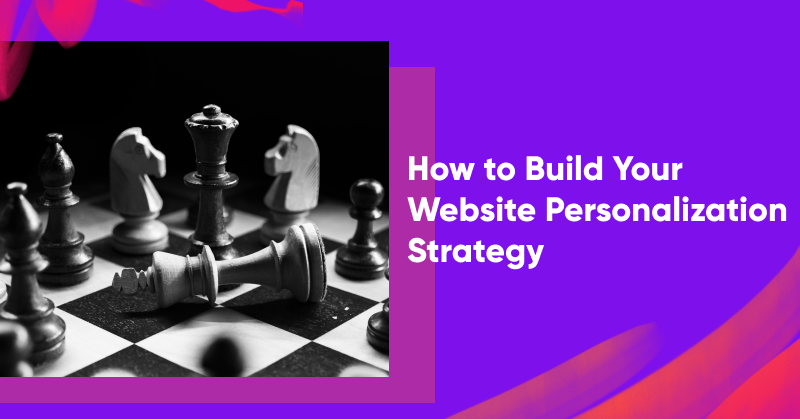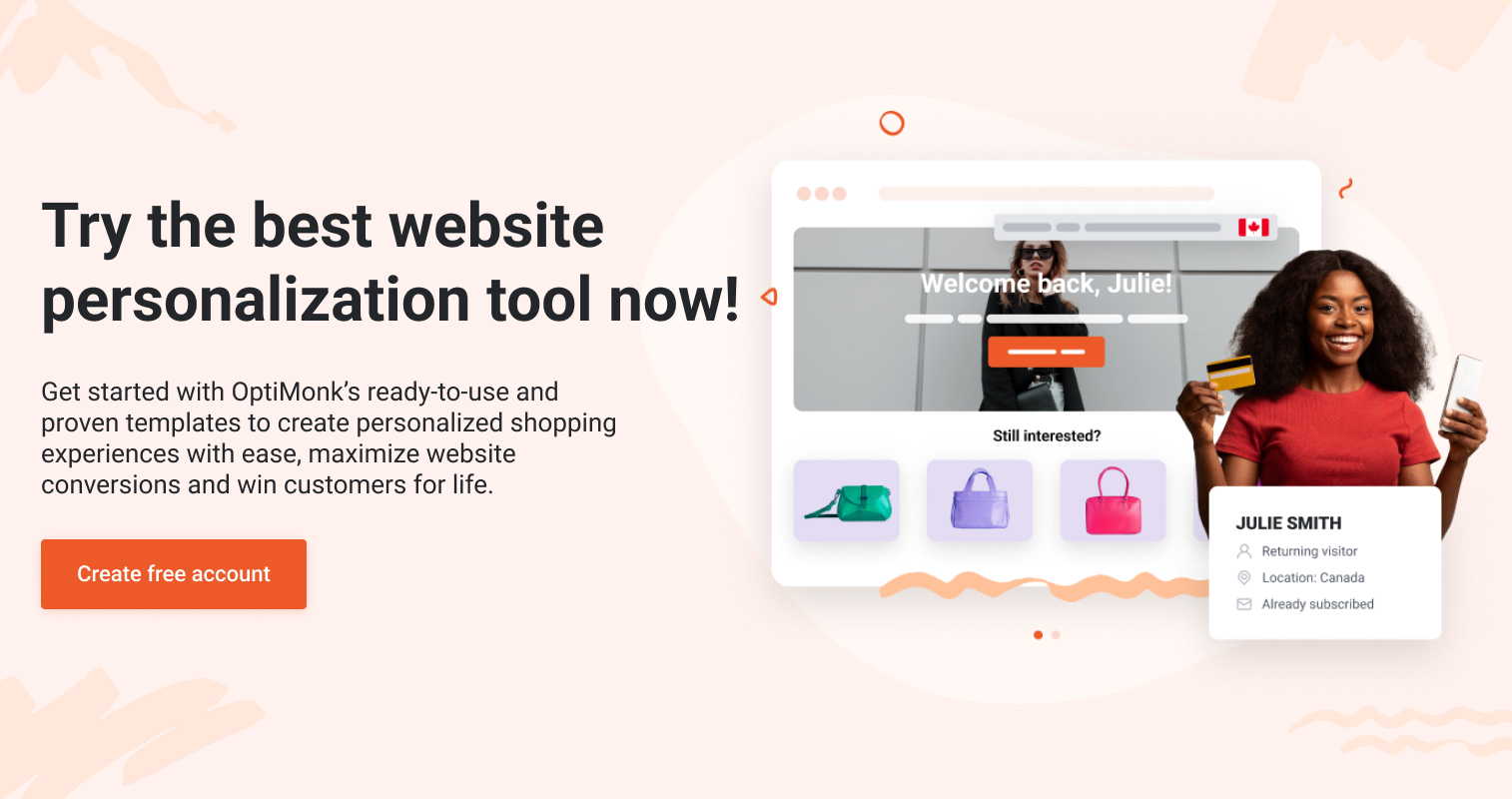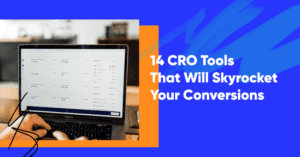Website personalization is a hot topic in ecommerce these days—and for good reason! Delivering a personalized experience to your online visitors is a route to higher conversions, more sales, and a boost in customer loyalty.
You’re already collecting lots of customer data just by having a store online, so why not put it to use and start personalizing your website?
Before you get started, you’ll need to develop a website personalization strategy that adapts the customer journey to each individual visitor. To achieve dynamic website personalization, you have to find a specific target audience for all of your marketing campaigns so that they’re relevant to everyone who sees them.
In this article, we’ll go over why you need to personalize your website and how to develop a strategy for all your personalized campaigns.
Let’s get started!
5 main benefits of website personalization
Running personalization campaigns is all about showing relevant content to each site visitor. When your website personalization efforts are successful, you’ll see your sales take off along with many other benefits.
Here are the five main benefits of website personalization.
1. Gives visitors what they want (and expect)
Customers are getting more and more used to the convenience that comes with a personalized website experience. Nobody wants to go looking through your entire website for the products or information they’re actually interested in… they expect to see relevant content right away.
91% of consumers say they’re more likely to shop with brands that keep track of their preferences and use them to provide relevant offers and recommendations.
2. Grabs the attention of your visitors
Personalized content cuts through the noise of irrelevant content and offers on the internet.
Showing your website visitors content that’s meant just for them grabs their attention with incredible effectiveness. And since they’re naturally interested in content that’s relevant to them, they’ll also be more likely to engage with the messages.
3. Helps to build trust
A personalized experience not only makes shopping on your website more convenient, it also makes your brand seem more trustworthy.
Why? Because personalized content based on user behavior simply isn’t something people associate with sketchy websites. When someone is browsing on a site that makes that effort, they perceive it as a professionally-run ecommerce store.
4. Increases ROI on your marketing campaigns
Any ecommerce store owner will tell you that customer acquisition is one of their most significant expenses.
Personalizing your website will make all your marketing campaigns more effective. That’s because you won’t be losing conversions by showing messages to visitors who simply aren’t interested in them.
When you’re using all the data at your disposal to provide a personalized user experience, you won’t need to spend as much on customer acquisition costs because you’ll be getting more out of the traffic you already have. And that equals a higher ROI.
5. Boosts revenue
Picking up on the last point, better conversion rates lead to more sales in general.
A personalization strategy leads to a customer journey that’s more seamless and convenient, putting fewer barriers in the way of a sale.
But personalization also leads to more loyal customers because people really appreciate when online stores relate to them as real people. This builds strong connections and long-term relationships.
How to build a website personalization strategy?
Although ecommerce personalization can seem complicated, it’s actually not that difficult to personalize your website. You just need the right strategy and the right personalization tool!
The website personalization process has 3 main steps:
- Audience discovery: Finding the right audiences to target with personalized messages.
- Message creation: Creating the right messages for these audiences.
- Evaluation: Measuring and analyzing the results, and then deciding on the next steps.
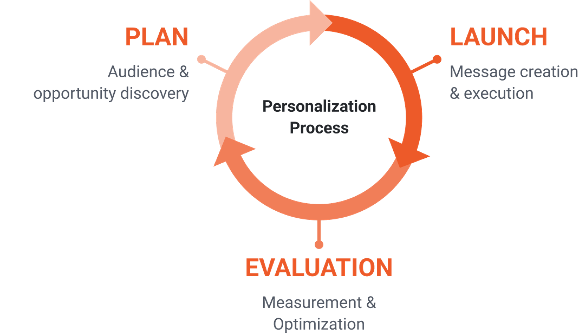
Now let’s discuss all of these steps in more detail!
1. Audience discovery
The key to any website personalization strategy is knowing your audience. The more you know—i.e. the more data points you can collect and analyze—the more tailored your personalization efforts will be.
Creating persuasive personalized content starts with breaking your overall audience into different segments that share a relevant characteristic. That way, you can create messages to appeal to each group of web visitors.
There are a number of ways to discover website personalization opportunities by finding groups of both existing and potential customers who will respond to certain messages.
The first place to collect data is from your Google Analytics account.
You’ll want to look for visitor segments that have significantly lower conversion rates compared to other segments.
Perhaps your visitors who are arriving from Instagram are converting at a much lower rate than those arriving from Facebook.
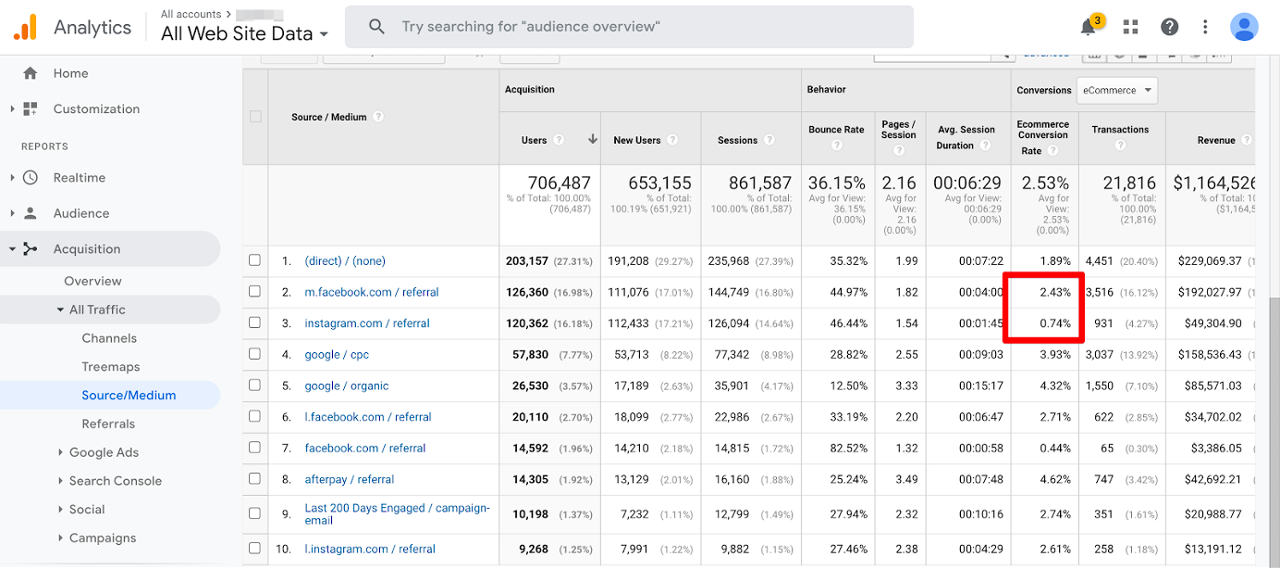
In this case, you can create personalized content to engage visitors from Instagram like in the example below:
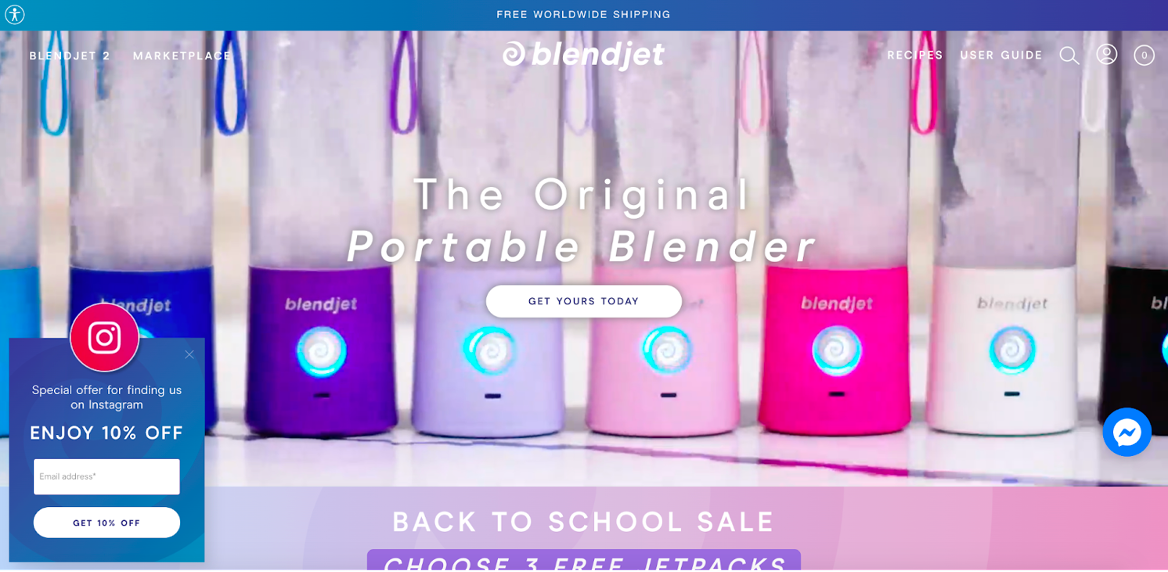
These low-performing visitor groups could be segmented by traffic source, but they could also be segmented based on the country they’re from, the content they view, or landing pages they’ve visited, just to name a few.
You can also use software like heatmaps and mouse tracking tools like Hotjar to examine the customer experience from the shopper’s perspective.
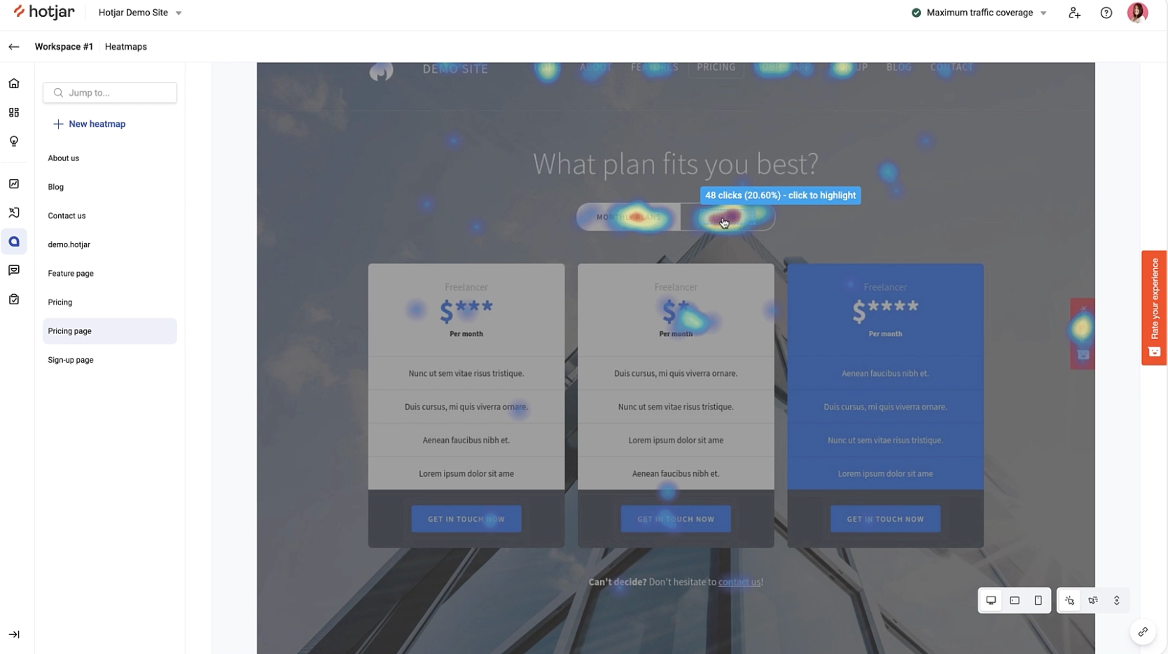
This will let you know where your website visitors are getting lost, and it provides an opportunity to use personalized content to keep them moving through the customer journey.
Another way to uncover great insights about your site’s performance is by doing customer interviews. They’re one of the most accurate ways to collect these insights, but they’re also one of the most expensive.
When you do customer interviews, you’ll be hearing directly from your visitors which means you’re automatically eliminating the guesswork involved in trying to decipher what their site behavior means.
Other useful data points include:
- A user’s browsing history
- The different web pages they’ve interacted with
- Any past purchases they’ve made
In general, there are three ways to create audience segments:
- Demographic segmentation: Use personalization to target users based on facts about them, like their age, gender, level of education, or marital status. You can also use location data for demographic segmentation.
- Psychographic segmentation: Use your users’ psychographic characteristics to provide a personalized experience by adapting your website content to people’s beliefs, values, and motivations.
- Intent segmentation: You can also split your website visitors into groups according to their level of buying intent, sending different personalized messages to visitors at different stages of the customer journey.
2. Message creation
After you’ve split your audience into different segments, it’s time to create messages that will resonate with each of them.
The first thing you need to decide is which message formats you’ll use to display your personalized content.
There are many possibilities, from embedded content to sticky bars, sidemessages, and popups. Each of these formats has different levels of assertiveness, which means they interrupt the browsing experience to a greater or lesser extent.
You should choose a format that fits the message you’re delivering.
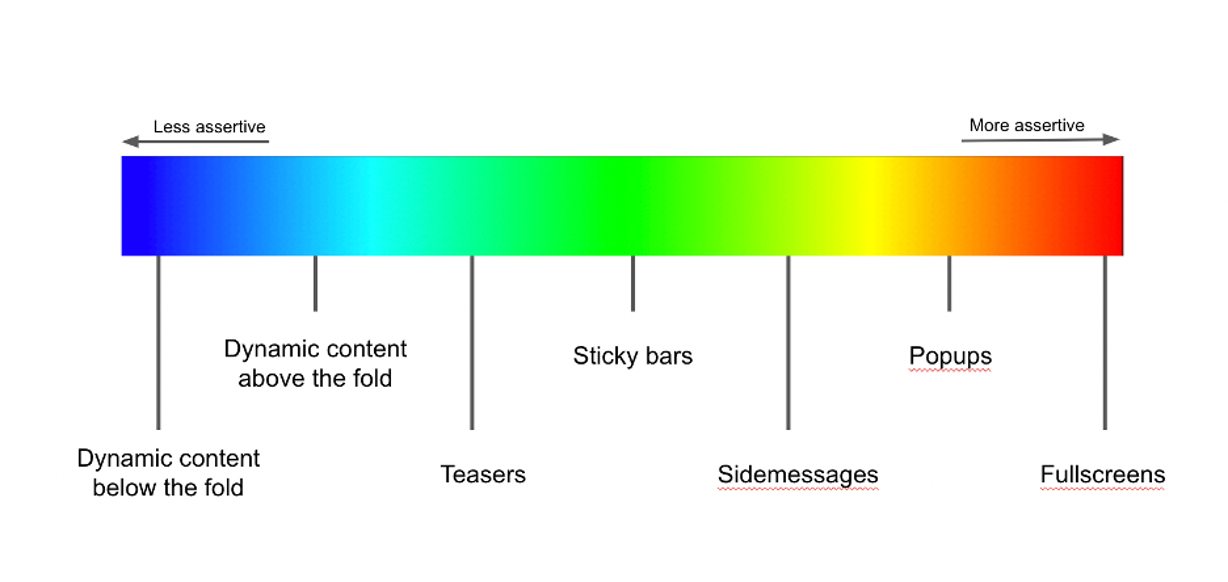
When it comes to creating messages, you should try to find the right unique value proposition for each of your audience segments. Which value propositions are best depends on the nature of your business and the segments that you’re targeting.
For example, potential customers who are early in the sales funnel might not be ready to make a purchase, so a regular discount offer doesn’t hold much value for them.
However, a sidemessage or popup that directs users to relevant content or information might be just the thing.
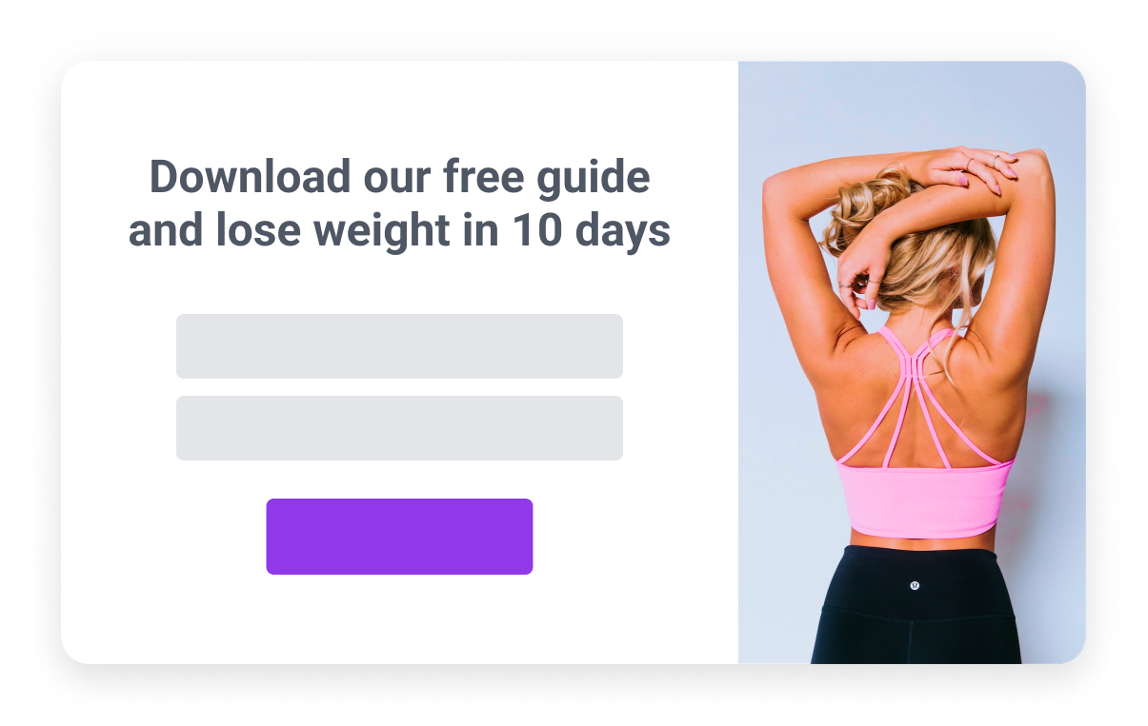
Later on, when a customer is almost ready to make a purchase, offering a discount is a great way to give them that final nudge.
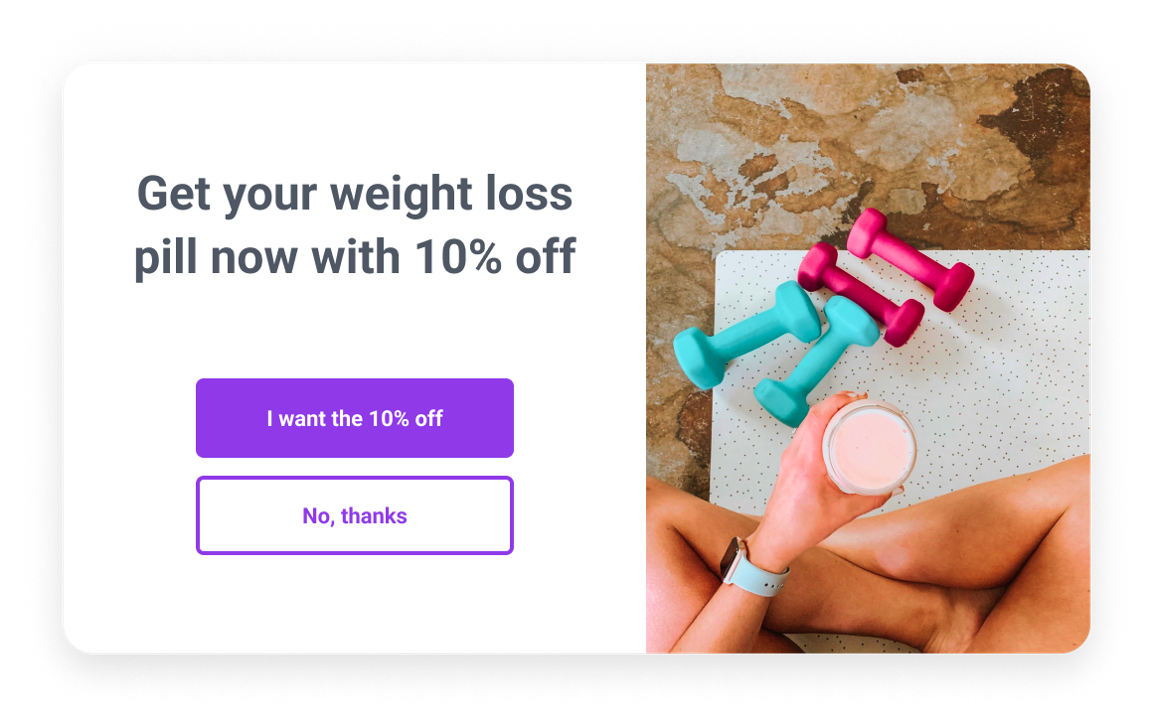
Whichever value proposition you decide to go with, make sure it’s easy to understand. Keep your messages to the minimum length required and make your calls-to-action clear and compelling.
Finally, make sure to choose the right moment to display your messages. It’s not a good idea to show too many messages all at once, as this can be overwhelming for your visitors. Instead, you should delay some of your messages, which is an approach called layering.
Overlays give you the opportunity to trigger some of your messages later than others, using triggers (like time spent on page) or user behavior (like exit intent or 50% scroll down).
If you’d like to learn more about the best way to orchestrate your messages, check out this article!
3. Evaluation
After you’ve created your audience segments and crafted messages for each of them, you shouldn’t forget about evaluating your website personalization strategy, a.k.a evaluating how well each of your website personalization ideas has actually panned out once you put them to work.
The gold standard for evaluating all ecommerce marketing strategies is A/B testing.
While you personalize your website, you should make sure that a group of website visitors sees the unaltered version of your website. That way, you can see how much better the personalized content performs than your regular site.
To do this, you’ll need a website personalization tool that allows you to A/B test personalization campaigns or campaign combinations, like OptiMonk.
Any personalized campaigns that aren’t performing up to expectations should be tweaked and then tested again. Perhaps you need a different message or call-to-action, or maybe you need to change how you’re creating your segments.
The best website personalization strategies never stop testing to figure out which segments can be targeted next and which messages can be improved upon.
Wrapping up
Hopefully, you’ve been able to pick up some useful knowledge from this overview of creating a website personalization strategy. Each site visitor should have the chance to get a customized experience that leaves them feeling fulfilled and excited to come back to your store.
If you’re looking to provide a personalized web experience for your site visitors, you’ll need to take advantage of one of the great website personalization tools out there. Our advice? Save yourself some time and start with the best: OptiMonk.
OptiMonk’s powerful website personalization tool is capable of implementing all of the strategies we’ve discussed here, and, even more incredibly, it’s free to use. Sign up for an account today!
